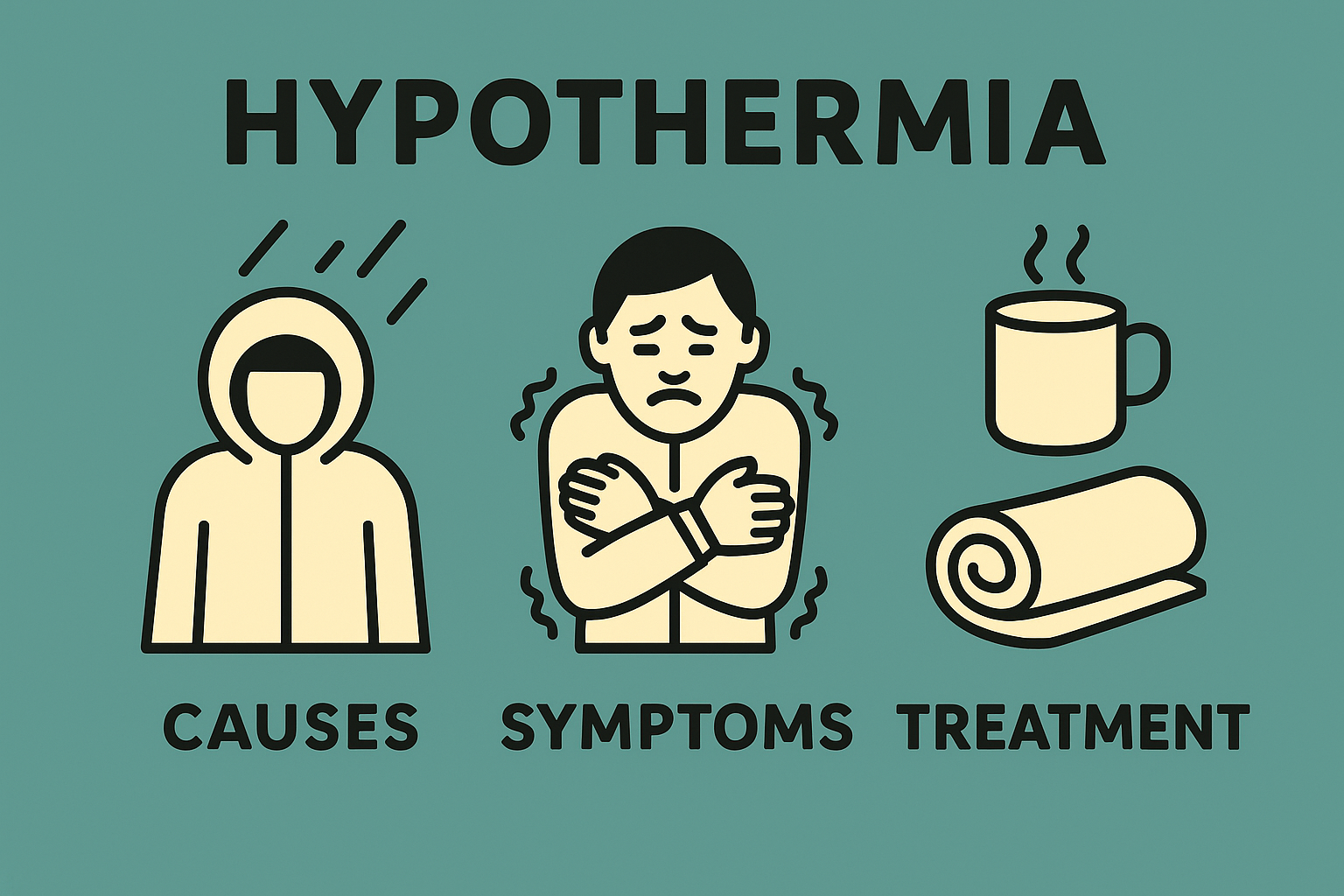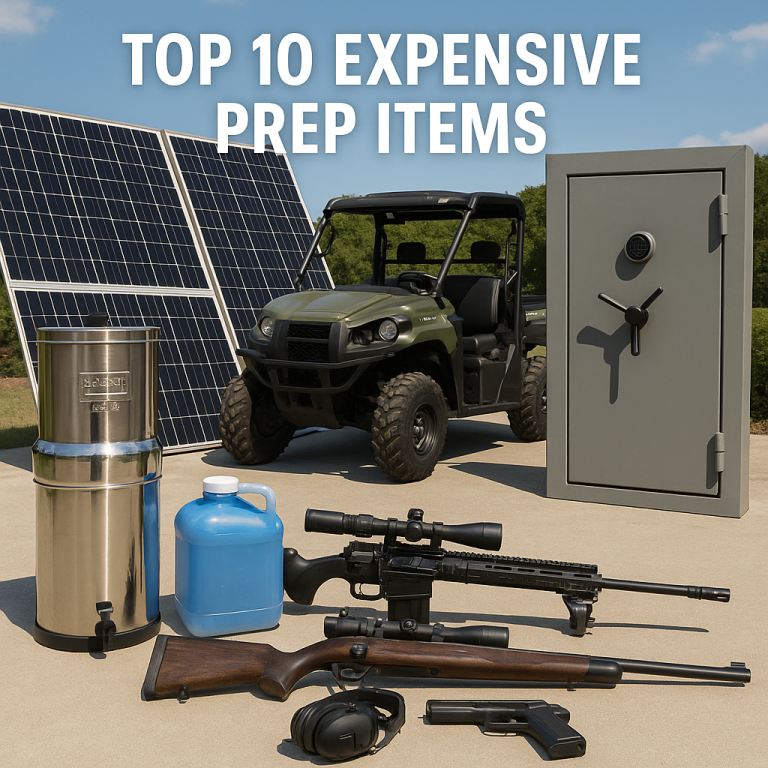Hypothermia is one of the fastest-acting and deadliest threats in any cold-weather survival situation. It doesn’t take a blizzard or arctic temperatures—people develop hypothermia in early autumn, during cool rainstorms, or even indoors when the power goes out. For Canadians and off-grid preppers, understanding how hypothermia works is essential to protecting yourself, your family, and your Mutual Assistance Group (MAG).
This article breaks down the causes, signs and symptoms, and treatment protocols you should follow when someone’s core temperature starts to drop.
What Is Hypothermia?
Hypothermia occurs when the body loses heat faster than it can produce it, causing the core temperature to fall below 35°C (95°F). As the core cools, critical organs slow down, thinking becomes impaired, and death can occur in as little as minutes—especially if the person is wet, exhausted, or unable to move.
Causes of Hypothermia
Hypothermia can strike far more easily than many expect. Common causes include:
1. Cold Weather Exposure
- Sub-zero temperatures
- Wind chill increasing heat loss
- Poor clothing or inadequate insulation
2. Wet Conditions
Moisture increases heat loss up to 25x faster than dry cold.
- Falling through ice
- Rain-soaked clothing
- Sweating under heavy gear
3. Immobility or Exhaustion
The body generates heat through movement.
- Injury preventing mobility
- Fatigue after hours of exertion
- Staying still while sheltering in place
4. Inadequate Shelter or Heating
A common risk during grid-down scenarios:
- Cold cabins or RVs
- Power outages in winter
- Sleeping directly on cold ground
5. Alcohol or Drug Use
These impair judgment and increase heat loss, making the risk significantly higher.
Symptoms of Hypothermia
Recognizing symptoms early is critical—especially because victims often don’t realize how impaired they are.
Early (Mild) Hypothermia
Core temperature: 32–35°C (90–95°F)
- Shivering
- Pale or cold skin
- Numb fingers and toes
- Difficulty performing tasks
- Slurred speech
- Poor coordination
Moderate Hypothermia
Core temperature: 28–32°C (82–90°F)
- Violent shivering or shivering stops altogether
- Confusion or irrational behavior
- Difficulty walking
- Slow pulse and breathing
- Drowsiness
- “Umbles”: mumbles, stumbles, fumbles, grumbles
Severe Hypothermia
Core temperature: below 28°C (82°F)
- No shivering
- Loss of consciousness
- Very weak or absent pulse
- Dilated pupils
- Cold, rigid body
- Risk of cardiac arrest
At this stage, recovery becomes very difficult without advanced medical care.
Treatment: How to Respond
Treating hypothermia correctly is critical. Wrong moves—like sudden heating or rough handling—can trigger fatal heart rhythms.
1. Move the Person to Shelter
- Get them out of the wind and cold immediately.
- If wet, remove wet clothing gently and replace with dry layers.
2. Apply the “WARM” Protocol
W – Warm liquids (if conscious)
Warm, sweet drinks help raise internal temperature.
Do NOT give alcohol or caffeine.
A – Add insulation
Use:
- Blankets
- Sleeping bags
- Down jackets
- Wool layers
- Space blankets
Insulate especially the chest, neck, groin, and head.
R – Raise body temperature gradually
- Use chemical warm packs, hot water bottles, or body-to-body heat.
- Apply heat to the armpits, groin, and chest only—never to arms or legs. Heating limbs pushes cold blood to the core and can cause cardiac collapse.
M – Move gently
Rough handling can trigger arrhythmias.
If they can walk, move slowly. If not, handle carefully.
When to Call for EMS
Call emergency services if the person:
- Is confused or unresponsive
- Has slowed or irregular breathing
- Is not shivering
- Has suspected severe hypothermia
In a grid-down situation, this may not be possible—so prevention and early intervention are your best tools.
Prevention Strategies for Preppers
Hypothermia is easier to prevent than treat. Build these into your MAG preparedness plan:
Layered Clothing System
- Moisture-wicking base
- Insulating mid-layer (fleece/wool)
- Wind/waterproof shell
Stay Dry
- Pack spare socks, gloves, and base layers
- Vent your clothing to avoid sweat buildup
Shelter Preparedness
- Maintain insulated sleeping systems
- Add woodstove or propane backup heaters
- Keep emergency mylar blankets in vehicles
Ice and Water Safety
- Avoid overconfidence on early or late-season ice
- Carry ice picks or a throw rope
Buddy System in Cold Weather
People become confused quickly—having a partner prevents unnoticed decline.
Final Thoughts
Hypothermia is silent, fast, and easily fatal—especially in Canadian winters or off-grid environments. By knowing the causes, spotting symptoms early, and applying proper treatment, you vastly increase your chances of survival.
Stay warm, stay aware, and prepare before you head into the cold.



